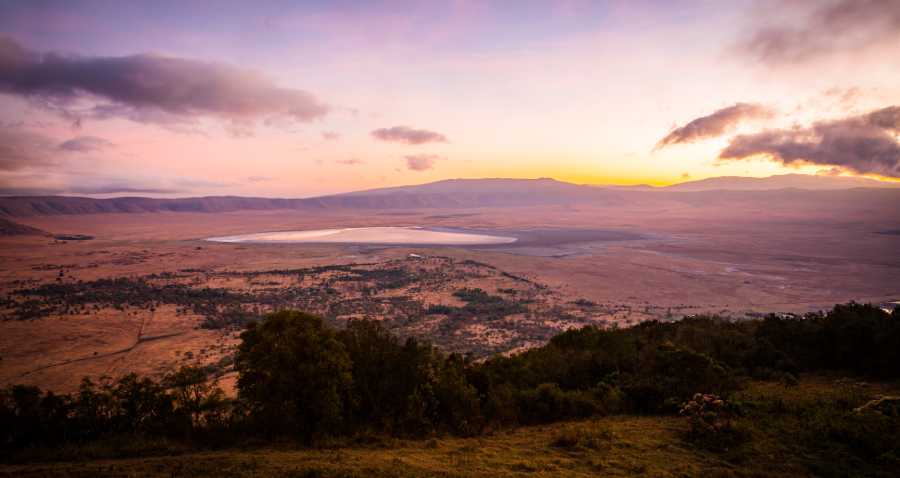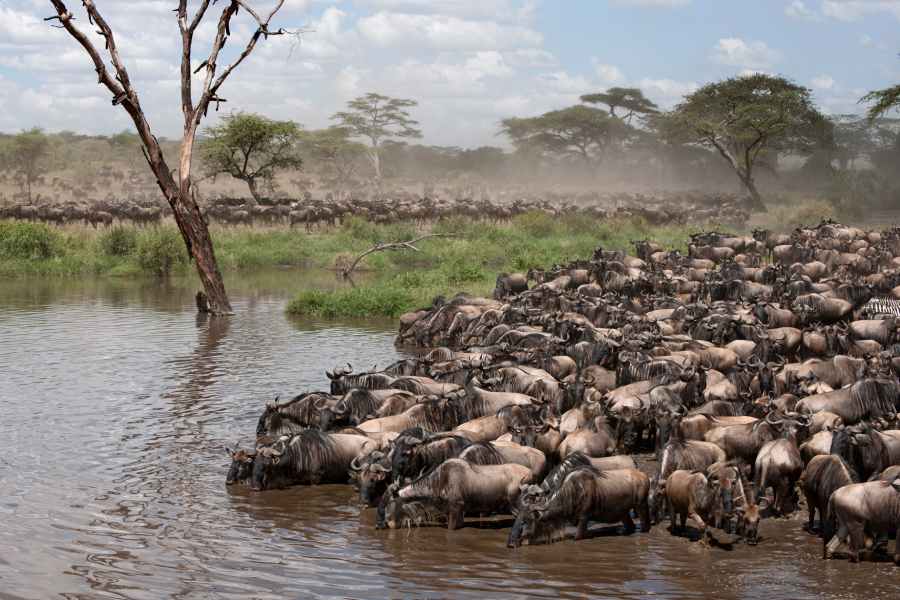Top 5 Unusual Safari Destinations In Tanzania
Download Travel Details >PRIVATE & SMALL GROUP TOURS TO THE WORLD'S BEST DESTINATIONS
Join Us For A Safari In Tanzania

Tanzania Guided Tours Go Off The Beaten Path
There’s nothing that can compare to a Tanzania wildlife safari; in fact, Tanzania is a premier safari destination in Africa! Safari has been a way of life in this East African country for decades. There are not many destinations in Africa that can come close to the diversity of wildlife and landscapes that Tanzania offers adventurers. From the savannah of the Serengeti and the Ngorongoro Crater to the beaches and coral reefs of Zanzibar, Tanzania guided tours truly offer visitors a once-in-a-lifetime experience.

When Is The Best Time To Plan Your Safari in Tanzania?
 The best time for safari in Tanzania is during the country’s dry season, which runs from late June to October. Tanzania has two distinct rainy seasons: April to May, which brings the long rains, and November to December, which brings short rains. The country’s long rains produce tropical downpours that can close many roads and block access to safari camps, while the short rains simply manifest as occasional, brief showers. Most safari destinations in Tanzania are in areas that enjoy warm days and cool evenings year-round. While temperatures can dip below freezing on Mount Kilimanjaro and Mount Meru, the country’s coastal and lakeside regions are hot and humid. Here is a month-by-month look at safari conditions in this exotic landscape:
The best time for safari in Tanzania is during the country’s dry season, which runs from late June to October. Tanzania has two distinct rainy seasons: April to May, which brings the long rains, and November to December, which brings short rains. The country’s long rains produce tropical downpours that can close many roads and block access to safari camps, while the short rains simply manifest as occasional, brief showers. Most safari destinations in Tanzania are in areas that enjoy warm days and cool evenings year-round. While temperatures can dip below freezing on Mount Kilimanjaro and Mount Meru, the country’s coastal and lakeside regions are hot and humid. Here is a month-by-month look at safari conditions in this exotic landscape:
- June is dry, but it is the busiest month for Tanzania guided tours. The rains have not yet made their annual appearance, so the savannahs are starting to change from green to yellow and wildlife sightings are improving as the native vegetation begins to recede.
- July is the peak Tanzania wildlife safari season! It’s the best time for safari in Tanzania because the weather is ideal and the Great Wildebeest Migration is at its height.
- August sees tourists flocking to the Northern Safari circuit, which includes Tarangire National Park, The Ngorongoro Crater, and the Serengeti National Park, as well as the beaches of Zanzibar. This month offers so many amazing opportunities for travelers to see the abundance of wildlife that calls Tanzania home.
- September is a quieter month. The crowds of tourists swarming the safari camps begin to thin. The weather is still dry, which means humidity levels are pleasantly low and mosquitoes are not actively pursuing the tourists who remain. September is also a great month for summiting Mount Kilimanjaro if that is on your bucket list.
- October usually brings the first rains of the long rainy season. However, it’s a great time to travel to Lake Tanganyika or visit Arusha National Park. in the Northern part of the country.
Combining Mountain Climbing And Wildlife Sighting
If you’re looking for a truly unique experience in Africa, look for Tanzania guided tours that combine climbing Mount Kilimanjaro with a trip (or trips) to Tanzania safari parks and reserves – some of which are off the beaten path. Not only will you climb Africa’s tallest mountain, but you will get to visit parks that are not usually part of a typical travel itinerary. Of course, you don’t want to skip a trip to Tarangire National Park, Lake Mayanara, or Ngorongoro Crater, but if you are planning to climb Mount Kilimanjaro, a side trip to some of the lesser-known parks and preserves that are nearby is well worth your time!
- Arusha National Park – this park has some of the best scenery anywhere in East Africa. Mt. Meru lies within the park’s boundaries, which easily rivals Mt. Kilimanjaro in terms of breathtaking beauty. A safari to Arusha will include sightings of flue monkeys, black-and-white colobuses, giraffes, elephants, zebras, red duikers, waterbucks, bushbucks, klipspringers, dik-diks, buffalo, and hippos. Not to mention the more than 400 different species of birds that live within the park!
- Mkomazi National Park – this exciting Tanzania wildlife safari destination will make any safari-goer happy with sightings of zebra, eland, topi, giraffe, oryx, lesser kudu, and gerenuk. It’s also a great place for birdwatching.
- Lake Chala – located near Mkomazi National Park, this side trip makes a great add-on during Tanzania guided tours. The lake’s steep, forested walls plunge down to its blue waters. The views of this lake are simply incredible, and you have the added bonus of being able to take it all in undisturbed as this location has not yet been discovered by many people!
- Lake Natrron – follow the Arusha-Nairobi road to get to this remote lake. This little-known location is one of the best places in East Africa to watch the country’s enormous population of flamingos in their natural habitat! If you trek a bit further past the lake, you can visit Il Doinyo Lengal, one of the most beautiful mountain peaks in Africa.
- West Kilimanjaro – this area is one for the more discerning safari traveler. The region is an important corridor for migrating elephants and lions moving between Kenya’s Amboseli National Park and northern Tanzania. A trip to West Kilimanjaro can combine cultural experiences with an astonishing number of wildlife sightings.
Why Should I Visit Mount Kilimanjaro?
The area surrounding Mt. Kilimanjaro on the Tanzania side of the border is simply one of East Africa’s most active safari destinations. There area is brimming with parks and game reserves that you can visit on a Tanzania wildlife safari, plus you have the opportunity to take Tanzania guided tours up the most amazing mountain peak in the area! No matter where you go, there will be plenty of wildlife to see, too. So get packing – adventure awaits in Tanzania!

